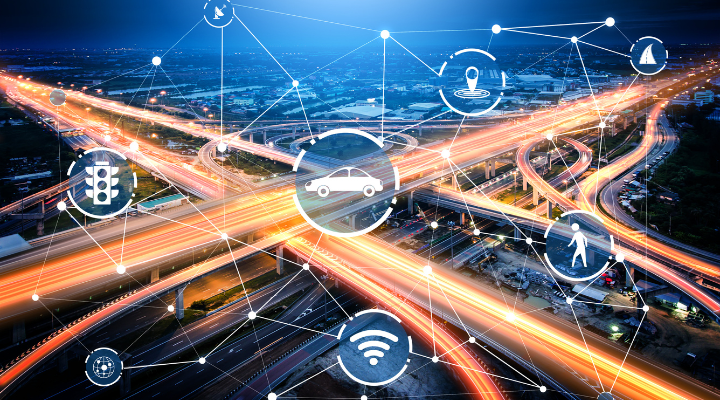Revving Up Urban Mobility: 5 Ways Technology and Data Are Shaping Our Cities
As urban landscapes continue to grow and face challenges such as congestion, pollution, and accessibility, technology and data are at the forefront of reshaping how we move through cities. These innovations are not only addressing pressing issues but also creating new opportunities for more efficient, sustainable, and inclusive urban mobility. Here are five key ways technology and data are revolutionizing urban transportation:
1. Growing Micro and Shared Mobility Solutions
According to Maximize Market Research, the global micro-mobility market was valued at $61.42 billion in 2024. Expert Market Research projects that this market will surge to $202.39 billion by 2032. Micro-mobility options like e-scooters, e-bikes, and shared ride services are becoming increasingly popular for short-distance travel. These solutions are enhancing flexibility, reducing congestion, and lowering carbon emissions, while complementing traditional public transport systems.By reducing the number of private vehicles on the roads, shared mobility services contribute to environmental sustainability and make transportation more accessible. As micro-mobility continues to scale, urban transport systems will become more diverse, integrated, and user-friendly.

2. Enabling Seamless Multimodal Transportation
According to Expert Market Research, the multimodal transport market was valued at $48.48 billion in 2024. This market is projected to nearly double by 2032, reaching $92.38 billion. This growth is driven by the seamless integration of various transportation modes, such as buses, trains, bikes, and ride-sharing services, into a unified system. Data-driven platforms are streamlining travel by allowing users to plan, pay for, and track their journeys on a single platform. This integration not only enhances convenience but also reduces the need for personal vehicles, helping to alleviate traffic congestion and lower emissions.
3. Improving Mobility Accessibility for All
In many parts of Latin America, particularly in informal settlements and rural areas, access to reliable public transportation is limited. Technology and data-driven solutions are helping to bridge these gaps by optimizing transportation networks and providing more flexible mobility options. On-demand ride services and shared mobility are proving especially valuable in underserved regions, ensuring greater access to essential services like education, healthcare, and employment, and contributing to greater equality.
4. Enhancing Traffic Management with Smart Solutions
Traffic congestion remains a significant challenge in urban centers, causing delays, increased fuel consumption, and higher emissions. Intelligent Transportation Systems (ITS), which utilize AI, connected devices, and data analysis, are emerging as powerful tools to address this issue. These systems enable cities to manage traffic flow more effectively by adjusting traffic lights and rerouting vehicles in real-time. According to Credence Research, the global ITS market is projected to grow from $48.61 billion in 2024 to $135.78 billion by 2032. This growth is driven by the increasing demand for traffic control solutions, smart vehicles, and the development of smart cities. These advancements are expected to improve travel times, enhance road safety, and reduce emissions.
5. Driving Smarter Urban Planning with Data-Driven Infrastructure
Digital twins, virtual representations of physical infrastructure, are transforming urban planning. These tools allow city planners to simulate and optimize transportation systems and urban spaces before implementing changes. By reducing trial-and-error processes, digital twins are helping cities make more informed and cost-effective decisions about infrastructure investments. By 2030, digital twins could save cities up to $280 billion globally, while ensuring urban development aligns with sustainability goals and accommodates growing populations.

Looking Ahead to 2025
As we move toward 2025, the evolution of urban mobility will continue to be shaped by groundbreaking technology and data-driven solutions. The emphasis will be on creating adaptable, resilient cities with transportation systems that are both efficient and inclusive. Innovations such as autonomous vehicles, AI-powered traffic management, and expanded electric mobility options will be critical to reducing congestion, improving air quality, and ensuring equitable access to transportation.
The future of urban mobility goes beyond just technological upgrades; it’s about building cities that are resilient, adaptable, and focused on enhancing the lives of residents. Through continued collaboration across industries and sectors, we can create cities that are smarter, more sustainable, and accessible for all.
Share your story
Do you have an innovation, research results or an other interesting topic you would like to share with the professionals in the infrastructure, traffic management, safety, smart mobility and parking industry? The Intertraffic website and social media channels are a great platform to showcase your stories!
Please contact our Sr Brand Marketing Manager Carola Jansen-Young.
Are you an Intertraffic exhibitor?
Make sure you add your latest press releases to your Company Profile in the Exhibitor Portal for free exposure.



